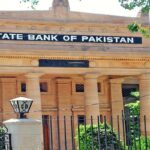The major victims of the economic recession in 2022 were the textile industry and its allied sectors; agriculture, import material-based industries and automobiles. All of this has led to a fear of major unemployment in the country.
Businessmen termed 2022 the worst performing year for Pakistan’s economy. The country’s currency dropped Rs49.31 against the US dollar and the interest rate rose to 16%, which is the highest since 1998-1999. In addition, inflation is in the double digits while the consumer price index (CPI) is currently hovering around 25%. In the first five months of FY 2023, the average Sensitive Price Index (SPI) stands at around 28%.
“Given the circumstances, it’s high time political parties, before the general elections of 2023, agree upon on a ‘Charter of Economy’ for at least 15 years, so that the business community and masses are aware of where we are heading,” Pakistan Businesses Forum (PBF) CEO, Ahmad Jawad told the Express Tribune, adding that 2023 will be another challenging year for the economy.
“Structural inflation and devaluation pose their own set of challenges for the government. A high policy rate globally is also aggravating the situation,” he noted.
“We cannot afford the free floating (exchange rate) policy as we are not that big an economy. We need a bailout to strengthen our rupee which is a key factor in kicking off economic activity in the country,” Jawad added.
Sustainable Development Policy Institute (SDPI) Executive Director, Abid Qaiyum Suleri said, “The year 2022 was a turbulent year for economies across the world due to Covid-19, global conflicts and climate change.”
“In the case of Pakistan, complacency, long-standing structural weaknesses and political gridlock have exacerbated the economic crisis,” he remarked.
“The good news of 2022 is that, despite its inherent economic vulnerabilities, Pakistan did not default on its external debt commitments. The bad news, however, is that we avoided a default not because of the strength of our economy but due to our debt structure,” explained Suleri.
“The point to ponder for next year is the need to maintain a subtle balancing act in our relationship with China, to whom we owe 30% of our debt, our relations with Saudi Arabia, to whom we owe nearly 20% of our debt and the US, who can help soften the tone and tenor of the IMF. Achieving this careful balancing act remains a daunting task,” he commented.
The PBF CEO called on the country’s policy makers to “Find a possible solution to clear the country’s debt. Without it, our economic growth will continue to deteriorate, as the burden of paying foreign debt and paying interest is increasing in Pakistan. The country continues to borrow, mainly to pay back old contributions and finance its current account (CAD) deficit.”
“The important question, however, remains unanswered; will leading economies like the US support us in repaying (or writing-off) our debt,” he asked, adding that Pakistan’s total debt is around $125 billion and that’s certainly a lot of money for us but not for China or the United States.
“On the other hand, some Chinese and American companies are three times as big as our total debt. Even the value of China Petroleum and Chemicals Corporation is $326 billion and the value of Walmart Inc in the US is $570 billion,” noted Jawad. South Asian Association for Regional Cooperation (SAARC) former Regional Advisor, Jahanara Wattoo lamented, “We will remain in the vicious circle of the IMF and other funding agencies and, therefore, our rupee will be even weaker. The conditions imposed by these donor agencies consistently suppress the currencies of underdeveloped countries.”


